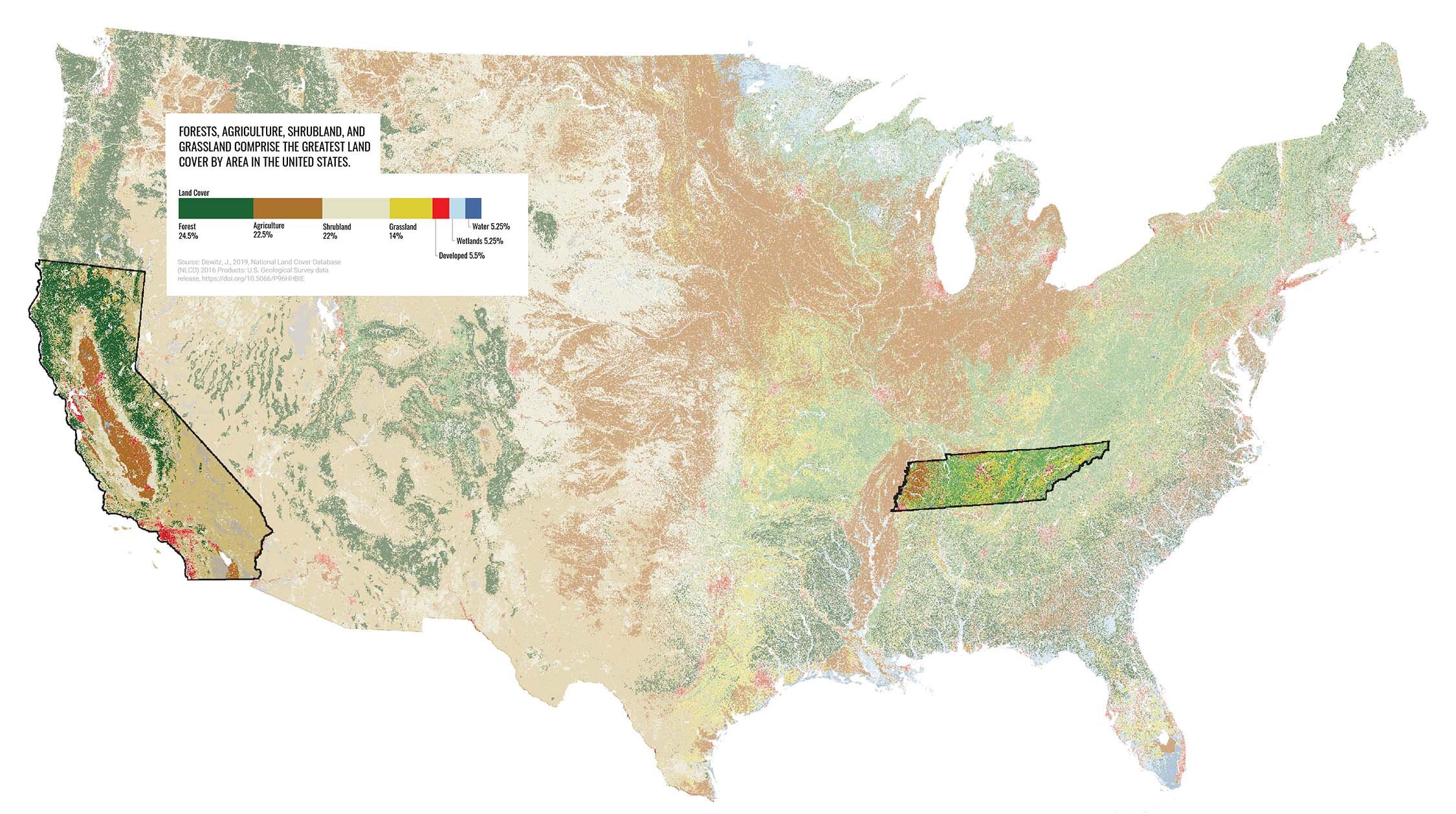Land Management @ Scale
Case Studies
The states of California and Tennessee provide initial testing grounds for the concept of land management at scale and the development of a land prioritization tool that informs how a network of protected lands can be formed. Each state has historical ties to landscape architects working at scale through the establishment of the first national parks (in the case of California), reforestation of watersheds, and development of public energy and water management infrastructure (in the case of Tennessee). What is the next iteration of this work? California and Tennessee present two radically different geographic and political contexts that will test the adaptability of an at-scale prioritization tool and suite of multi-benefit management strategies.
California
53% of land in CA is publicly owned.
How is land use in CA projected to change in the coming decades?
California is expected to reach peak density between 2020 and 2030, after which density will begin to decline. Between 2020 and 2100, 5,900 acres of land may be developed to accommodate urban growth.
61% of Californians live in areas with less than 3 acres of parks or open space per 1,000 residents.
What has motivated land use protection in CA over time?
~22% of all CA lands are permanently protected from conversion.
Tennessee
14% of land in TN is publicly owned.
Who in Tennessee has access to nature?
*Analysis conducted by Center for American Progress using census tracts. A census tract is considered “nature deprived” if it has a higher proportion of natural area lost to human activity, including urban sprawl, than the state-level median.
8x Agricultural land in low-density residential areas is 8x as likely to be converted than other agricultural land.
Publicly owned land (2020)
~8% of all TN lands are permanently protected from conversion.



